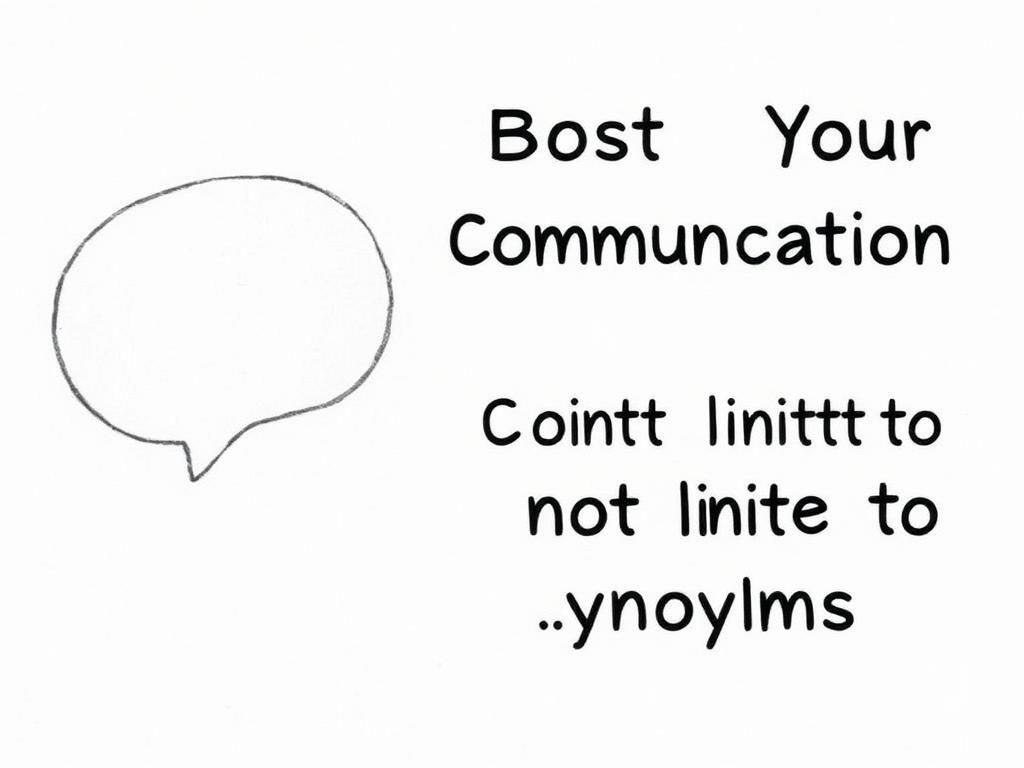Effective communication hinges upon clarity and precision, and language plays a crucial role in how we convey our thoughts and ideas. One phrase that often comes up in various professional and academic settings is “including but not limited to.” This phrase is vital for outlining parameters without being overly restrictive, allowing for inclusivity in discourse. In this article, we will delve into the phrase, its importance, and various synonyms to seamlessly exchange ideas while enhancing our communication skills.
Understanding “Including but Not Limited To”
Meaning and Usage
The phrase “including but not limited to” serves as a comprehensive way to introduce examples without confining the scope of discussion. It indicates that what follows is part of a larger set, but it does not exhaustively list all possibilities. Commonly used in legal, academic, and business contexts, this phrase helps articulate inclusiveness and flexibility.
In legal documents, for example, this phrase might clarify that while certain items are specified (like rights and responsibilities), other items may also apply without being explicitly stated. In academic writing, it allows authors to provide examples while signaling that the discussion encompasses a broader range of topics.
Importance in Formal Communication
Utilizing “including but not limited to” in formal communication enhances clarity and precision. Particularly in legal or business contexts, ambiguity can lead to misinterpretations, which is why this phrase and its synonyms are crucial. They help prevent vagueness in meaning and ensure that the intended message is communicated effectively.
Synonyms for “Including but Not Limited To”
Primary Alternatives
There are several primary alternatives to “including but not limited to” that can be employed based on context. These include:
– “Such as” – A straightforward way to present examples.
– “For example” – Useful for illustrating a point with specific instances.
– “Among others” – Indicates there are more examples available outside of those listed.
Contextual Variations
Certain contextual alternatives can convey a similar meaning without repeating the same phrase:
– “Not limited to” – Focuses on highlighting additional possibilities.
– “Including but not restricted to” – Emphasizes that the examples provided are not exhaustive.
– “Including (but not limited to)” – Retains the original phrase but offers flexibility in presentation.
Formal Equivalents
In formal communication, you might consider using:
– “With the exception of” – Specifies exclusions clearly.
– “Comprising” – Denotes a comprehensive assembly of categories.
– “Encompassing” – Suggests inclusion within a broader framework.
Informal Alternatives
In more casual settings, different expressions work well:
– “Like” – Easily understood and common in everyday conversation.
– “And more” – Encourages a sense of additional options.
– “Pretty much” – Conveys a relaxed tone while indicating approximate inclusion.
Choosing the Right Synonym
Context Matters
When selecting a synonym, the context is essential. Each situation demands specific phrasing to ensure the right message is conveyed acoustically. For instance, “such as” might be well-received in a casual report while “comprising” would suit formal documentation. Understanding your audience is key to ensuring effective communication.
Tone and Audience
Different settings require a conscious adjustment of tone. In a business proposal, “including but not limited to” may be appropriate; however, a report to colleagues might allow “like” or “and more” since the tone can be more relaxed. Adjusting language based on the target audience fosters better connection and understanding.
Practical Applications
In Legal Documents
The phrase “including but not limited to” is particularly crucial in legal language as it clarifies intent and scope. For example, a contract clause might state, “The responsibilities of the contractor include, but are not limited to, completing the project on schedule, adhering to quality standards, and maintaining communication with stakeholders.” This demonstrates how such phrasing signals inclusivity in responsibilities.
In Academic Writing
When writing scholarly articles, precision is fundamental. Using “including but not limited to” helps outline implications and research areas. For instance, “The study covers various renewable energy sources, including but not limited to solar, wind, and geothermal energy.” This ensures readers understand the scope of the discourse while maintaining an inclusive approach.
In Business Communication
In the business world, clarity and conciseness are paramount. Using synonyms helps avoid misunderstandings during presentations or proposals. For example, you might say, “Our services include such as marketing strategy development and brand management among others.” This way, stakeholders recognize that other services are available while focusing on key examples.
Common Mistakes to Avoid
Overusing the Phrase
While “including but not limited to” is useful, overusing it can lead to redundancy. Too much repetition can negatively impact engagement and make writing seem tedious. Aim for variety in language to enhance readability and maintain the audience’s interest.
Misinterpretation of Synonyms
It’s essential to recognize that not all synonyms convey exactly the same meaning. Using a synonym that fails to reflect the intended scope can lead to ambiguity. For instance, using “like” in formal proposals may diminish the perceived professionalism intended by “including but not limited to.” Always consider the context to avoid any unwarranted misinterpretation.
Conclusion
In navigating the complexities of language, understanding synonyms for “including but not limited to” can significantly enhance communication skills. Whether in legal, academic, or business contexts, choosing the right phrase holds great importance in conveying messages with clarity and effectiveness. Diversifying language use serves to engage readers and listeners more effectively while avoiding redundancy and misunderstanding.
Additional Resources
Expanding your vocabulary with synonyms can significantly boost your communication. Here are some helpful resources:
– Online thesauruses such as [Thesaurus.com](https://www.thesaurus.com) or [Merriam-Webster’s Thesaurus](https://www.merriam-webster.com/thesaurus) can aid in finding alternatives.
– Writing guides like “The Elements of Style” by Strunk and White offer valuable tips on effective communication.
– Academic papers exploring nuances in language are available through platforms like [Google Scholar](https://scholar.google.com).
FAQs
What does “including but not limited to” mean?
This phrase indicates that what follows is part of a larger set, suggesting there are more examples or elements that could apply.
Why is using synonyms important?
Using synonyms enhances language clarity, precision, and variety, which fosters better understanding and engagement.
In what contexts is “including but not limited to” commonly used?
It is primarily used in legal, academic, and business communications to outline examples inclusively.
What are some formal alternatives to “including but not limited to”?
Formal alternatives include “with the exception of,” “comprising,” and “encompassing.”
Can overusing the phrase be problematic?
Yes, excessive use can lead to redundancy and decrease engagement in writing.
How do I choose the appropriate synonym?
Consider the context, tone, and audience to select the most suitable synonym for clear communication.
What is the impact of using synonyms in academic writing?
Using appropriate synonyms can enhance specificity and inclusivity, leading to a more robust academic discourse.
Are there informal alternatives to “including but not limited to”?
Informal alternatives include “like,” “and more,” and “pretty much.”
How can effective communication benefit from understanding this phrase?
Understanding the phrase and its synonyms allows for clearer and more inclusive exchanges of ideas, preventing ambiguity.
Is “including but not limited to” necessary in all communications?
While it is particularly useful in formal contexts, it may not be necessary in casual conversations where brevity is preferred.
| Phrase Type | Examples | Usage Context |
|---|---|---|
| Primary Alternatives | Such as, For example, Among others | Casual to formal |
| Contextual Variations | Not limited to, Including but not restricted to | Formal settings |
| Formal Equivalents | With the exception of, Comprising, Encompassing | Legal, academic documentation |
| Informal Alternatives | Like, And more, Pretty much | Informal conversations |


